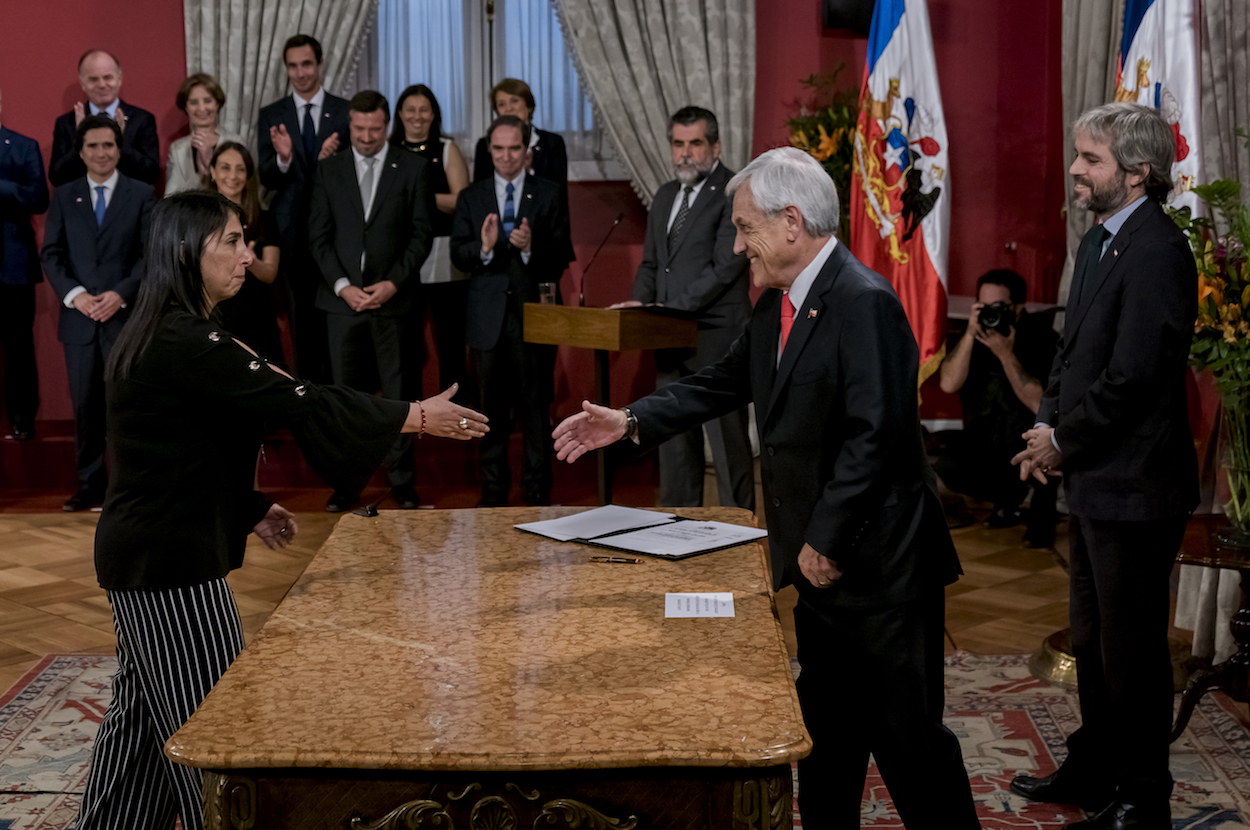The protests that began in Chile last month over an increase in subway fares and evolved into massive displays of social discontent show few signs of letting up. Even after President Sebastián Piñera reshuffled his Cabinet on Oct. 29, demonstrators remained on the streets, demanding wider changes to what they see as an unfair economy and antiquated political system.
Just what type of change a majority of Chileans actually want is still coming into view. Even less clear is who they want to lead their calls for renewal. Longstanding frustrations with corruption and congressional gridlock have stirred “extreme distrust of politicians and parties,” said Loreto Cox, an expert on public opinion and politics at Chile’s Center for Public Studies.
With municipal elections a year away and a presidential race in 2021, it’s worth asking how the current protests might shape the political landscape in the months ahead. Here are four possibilities:
A renewal of the center
Since its transition to democracy, Chile has oscillated between center-left and center-right governments. The country’s constitution, a legacy of the Augusto Pinochet dictatorship, makes political reforms difficult, and successive governments have since passed further changes to encourage political consensus. The result is a degree of political stability (or rigidity, as a recent Washington Post op-ed put it) that has kept many of the same parties and politicians in power for decades.
Piñera’s Cabinet reshuffle went some way in recognizing the population’s hunger for change. He kicked out five ministers, who averaged 58 years old, and replaced them with 40-somethings. Many Chileans believe the changes so far are cosmetic, and have criticized Piñera’s decision to simply move three other ministers to different posts, and to leave in place ministers for health, education and transportation, issues at the heart of the protests. But some of the president’s choices suggest a fresh perspective is possible.
Karla Rubilar, 42, was the mayor of Santiago when the protests erupted, and after her reaction to the city’s violence drew a positive response, Piñera tapped her to join the Cabinet as the government’s spokesperson.
“She was one of the few people who responded very well to the crisis, who said the right things, who did the right things, and whose image improved,” said Patricio Navia, a professor of liberal studies at NYU and professor of political science at Diego Portales University in Chile.
Ignacio Briones, 46, who replaced Felipe Larraín as finance minister, and Gonzalo Blumel, 41, who became interior minister, may also inject Piñera’s cabinet with a greater dose of centrist thinking.
Rubilar, Biones and Blumel are less orthodox in their approach to politics, said Kenneth Bunker, a Chilean political analyst and professor at the University of Milan. That could facilitate agreements between centrist parties, and ultimately lead to reforms that Chileans are demanding.
“It’s going to be much easier for Rubilar, Briones and Blumel to negotiate and have conversations with the center,” Bunker told AQ. “It’s a generational thing, but it’s also a perspective on politics. Not only are they not tied to Pinochet, but they also have a more liberal approach.”
A change may already be underway. On Oct. 31, after Briones and Blumel met with opposition party leaders, the government said it was willing to work on a more equitable tax plan, in what newspaper La Tercera called a “strong shift” from its previous position.
A shift left
Protests against a right-wing government might be expected to produce a political shift to the left. But Chile’s left is divided over how hard of a line to take in their response to Piñera.
Both the far-left Community Party and the Broad Front, a coalition of leftist parties founded by student activists-turned-legislators Giorgio Jackson and Gabriel Boric, chose not to attend meetings between Piñera and other party heads to address the protests, citing distrust of the president and a need for certain demands to be met prior to dialogue.
Meanwhile, the moderate left has “been pretty paralyzed in the midst of this whole situation,” said Bunker.
The Broad Front and other far-left legislators have presented a formal petition to remove Piñera on grounds he’s responsible for human rights violations that occurred in response to the protests. But there is little unity on the left around the effort; Javiera Parada, a well-known left activist, even broke from Jackson’s Democratic Revolution party in opposition to the move.
Despite their internal challenges, the protests are an ideal opportunity for the left promote its agenda, which includes increasingly popular calls for replacing the Pinochet-era constitution. When asked on Oct. 30 about the possibility of a new constitution, Piñera said he “would not disregard any structural reform.”
Some have their doubts about just how mainstream the left’s demands are.
“Many have interpreted the protests as a sign that people are demanding a radical change,” said Cox. “I think there may be some of this, but at the same time the option of radical change was on the ballot in the last presidential election in the form of the Broad Front’s presidential candidate, Beatriz Sánchez.”
Sánchez, a journalist, came in third in the 2017 election and is still the coalition’s most likely presidential candidate for 2021. But while the Broad Front is well positioned with respect to the protests, they don’t seem to have benefited so far. A poll by Cadem conducted after the protests began shows Broad Front lawmakers’ approval rating at just 16% – two points higher than Piñera’s.
“The student leaders are respected voices and maybe they could take advantage of the current situation,” said Chris Lenton, senior editor for Latin America for Natural Gas Intelligence, who lives in Santiago. “I just haven’t seen that yet.”
An empowered far-right
Such is the disarray surrounding the current protests that even the right could stand to benefit. According to the Cadem poll, around half of Chileans (49%) disapproved of Piñera’s use of the army to control protesters. But nearly the same amount (45%) say they agreed with his decision, and nearly 90% disagreed with the violence and destruction of public property that some of the protesters carried out.
José Antonio Kast, a socially conservative former national deputy who ran for president in 2017, has responded to the protests with calls for a hard line against those he sees as “delinquents.”
“Kast is basically pushing for an agenda of public order,” said Bunker.
Even before the protests, Kast’s public profile had been on the rise. During his run in 2017, polls predicted he’d earn 2-3%. Instead, he earned nearly 8% and finished fourth. He now says he’d like to run again in 2021.
“We have lived through some intense episodes of violence that are totally new in Chile since the return to democracy,” said Cox. “And as we’ve seen elsewhere, violence can stir in some groups a desire for more order, for mano dura policies.”
Inaction, polarization – and more frustration
It is also possible that no leader or party will be able to effectively channel popular discontent. That could mean more partisan gridlock, more blocks on reform, and more frustration on the streets.
A lack of clear leadership in the country could make that outcome more likely. While Piñera’s approval has dropped to a historic low at 14%, he’s not alone. In fact, lawmakers from all of the main parties find their approval rates in the low- and mid-teens, according to Cadem.
“There are no strong leaders, neither in the government nor in the opposition, or even among the protesters,” said Cox.
Meanwhile, much of the public debate since the protests began has been driven either by members of the far left who want Piñera removed from office, or by those on the far right who worry more about social order than the protesters’ concerns.
“The status quo is now that you have the two extremes pushing for extremist ideas,” said Bunker. “Everyone in between with the more moderate, more technical solutions has been muted by the chaos, so it’s pretty easy for the media to pick up on these extremes.”
—
O’Boyle is a senior editor for AQ








